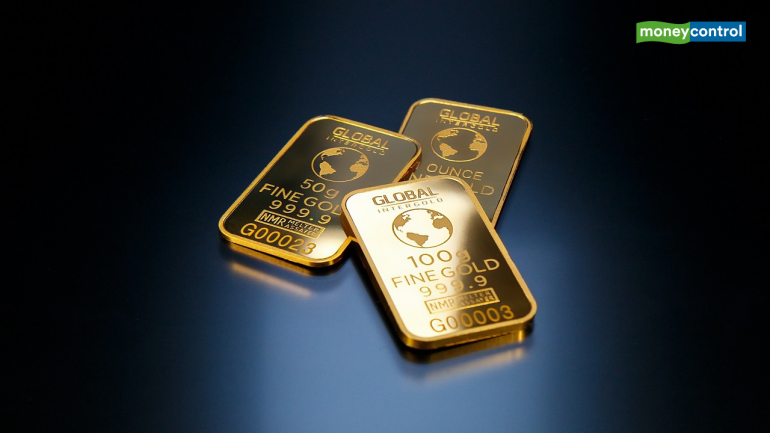The next couple of months are going to be action-packed for gold due to the numerous downside risks that currently persist in the global arena
Gold funds are gaining popularity as an asset class among investors. This is evident from the inflows into gold funds in the last one year.
Data from the Association of Mutual Funds of India (AMFI) shows that investors infused Rs 16 crore into 14 gold-linked ETFs last year as against outflows of Rs 571 crore in 2018.
In terms of returns, the category was numero uno across all mutual fund categories, delivering 19.41 percent average returns in the one-year period ending February 5.
SBI Gold Fund has delivered the highest one-year return of 21.32 percent, followed by Invesco India Gold (20.86 percent) and Kotak Gold Fund (20.61 percent).
These open-ended funds invest in units of a gold exchange traded fund (ETF) and seek to provide returns that closely mirror physical prices. This passive investment instrument looks to capitalise from price movements in the yellow metal.
Fund managers prefer gold ETFs over physical gold due to its low holding cost, no risk of theft, control over quality and no wealth tax.
Explaining the reason behind the run up, asset managers said volatility and uncertainty in other asset classes prompted investors to turn to safe-haven investments like gold funds or ETFs. "Investors are also diversifying their investments into gold schemes, expecting stable returns," a fund manager said.
Gold experts suggest a gold allocation of 10-15 percent in one’s portfolio. "Since gold has a very strong negative relationship with equities, it makes sense to have some 10-15 percent in gold ETFs or other investment products as a hedge," a fund manager from a private fund house stated.
Going forward, the fund manager sees appetite for gold ETFs rising amid volatility in the equity market and ease of buying.
Outlook on the yellow metalGold prices have been on an upward trend in the last few months. Experts see the uptrend continuing on the back of geopolitical risks and spread of coronavirus.
“Gold prices rise further due to geopolitical risks and added concern stemming from spread of the coronavirus,” said Kumar Jain, Vice-President, Mumbai Jewellers' Association.
Concurring with Jain, Chirag Mehta, Senior Fund Manager - Alternate Investments, Quantum Mutual Fund, said, “Rising concerns on whether China will be able to meet its pledge of buying $200 billion worth of US goods over two years under Phase 1 of the trade deal on account of the epidemic.”
As per Jain, spot gold price is expected to touch $1,700 per ounce as against $1,553 at present. In 2019, spot gold rose 16.23 percent year-on-year in dollar terms.
Mehta feels the next couple of months are going to be action-packed for gold due to the numerous downside risks that currently persist in the global arena. “Global slowdown concerns, fuelled by the China epidemic, are expected to re-emerge, leading to volatility in equity markets and driving demand for gold. With major central banks expected to remain accommodative throughout 2020, gold is likely to benefit,” he explained.
“US budget deficit is expected to top $1 trillion in 2020 in spite of the economy doing well and unemployment at multi-year lows. In addition, deep trade disputes exist alongside geopolitical tensions and intensified effects of climate change,” he added.
Investors, Mehta said, should use any corrections as an opportunity to add more gold to their portfolio or ideally keep allocating in a systematic manner.
January turned out to be a roller-coaster ride for gold with prices moving in a $1510-1610/ounce range as investors reacted to a host of fresh uncertainties on the economic, social, environmental and geopolitical front.
While markets were rejoicing US and China signing of the phase one trade deal, an outbreak of Coronavirus started taking its toll on global growth projections. Volatility and uncertainty bode well for gold, ending the month at $1580.85/oz with gains of 3.8 percent in January.
At 15:21 pm, spot bullion in Mumbai was trading around Rs 40,312 per 10 gram. On February 6, Mumbai spot bullion had closed at Rs 40,210 per 10 gram. In 2019, the yellow metal had rose 26.045 percent year-on-year.Exclusive offer: Use code "BUDGET2020" and get Moneycontrol Pro's Subscription for as little as Rs 333/- for the first year.















